Einleitung
Diese Anleitung ist nur eine grundständige Anleitung.
Werkzeuge
-
-
Hebe mit dem flachen Ende eines Spudgers den Verbinder des rechten Ventilators aus seinem Sockel auf dem Logic Board.
-
-
-
Entferne die drei 3,4 mm (3,1 mm) Torx T6 Schrauben, die den rechten Ventilator am Logic Board befestigen.
-
Hebe den rechten Ventilator aus seiner Öffnung im Logic Board.
-
-
-
Hebe den Airport/Bluetooth Verbinder mit dem flachen Ende des Spudgers aus seinem Sockel auf dem Logic Board.
-
-
-
Hebe den Verbinder zum optischen Laufwerk mit dem flachen Ende des Spudgers aus seinem Sockel auf dem Logic Board.
-
-
-
Löse das Kabel zur Festplatte/IR Sensor aus seinem Sockel auf dem Logic Board, indem du unter dem Verbinder anhebst.
-
-
-
Hebe den Verbinder des Subwoofers/rechten Lautsprechers aus seinem Sockel auf dem Logic Board.
-
-
-
Die Abdeckung über dem Tastatur/Trackpadkabel ist mit zwei 1,5 mm (1,2 mm) Kreuzschlitzschrauben auf dem Logic Board befestigt. Drehe sie heraus.
-
Hebe die Abdeckung ab und lege sie zur Seite.
-
-
-
Heble den Verbinder zum Trackpad mit dem flachen Ende des Spudgers aus seinem Sockel auf dem Logic Board.
-
-
-
Klappe die Halteklappe des ZIF Verbinders des Tastaturflachbandkabels mit dem Fingernagel hoch.
-
Löse das Flachbandkabel der Tastatur mit der Spitze des Spudgers aus seinem Sockel.
-
-
-
Löse den Verbinder der Akkuanzeige mit dem flachen Ende des Spudgers aus seinem Sockel auf dem Logic Board.
-
-
-
Fasse die Zuglasche aus Kunststoff, die an der Sicherung des Displaykabels befestigt ist, und drehe sie in Richtung der Seite mit der Stromeingangsbuchse am Computer.
-
Ziehe das Displaykabel aus seinem Sockel auf dem Logic Board.
-
-
-
Klappe die Halteklappe am ZIF Anschluss des Flachbandkabels der Tastaturbeleuchtung mit der Spitze des Spudgers hoch.
-
Ziehe das Flachbandkabel der Tastaturbeleuchtung aus seinem Sockel.
-
-
-
Drehe folgende neun Schrauben heraus:
-
Sieben 3,4 mm (3,1 mm) T6 Torx Schrauben auf dem Logic Board
-
Zwei 8 mm T6 Torx Schrauben auf dem DC-In Board
-
-
-
Hebe die ganze Einheit mit dem Logic Board vorsichtig auf der linken Seite an und aus dem Gehäuse heraus. Achte dabei darauf, dass sich das Kabel des optischen Laufwerks und die I/O Ports nicht verfangen.
-
Trenne falls nötig das Mikrofon mit dem flachen Ende des Spudgers vom oberen Gehäuse.
-
Ziehe die Seite des Logic Boards mit den I/O Ports seitlich vom Gehäuse weg und entferne die ganze Logic Board Einheit.
-
Um dein Gerät wieder zusammenzubauen, folge den Schritten in umgekehrter Reihenfolge.
Ein Kommentar
Should a person be using an ESD wristband or anti-static mat when doing this? I didn’t use one and now I’m worried.
Nick Doe -
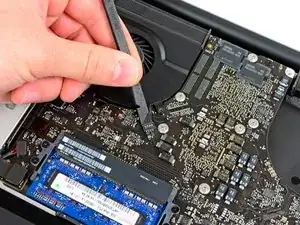
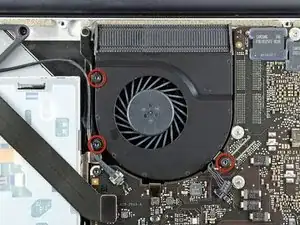
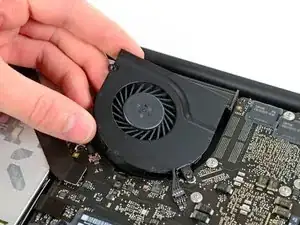
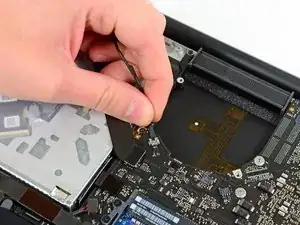
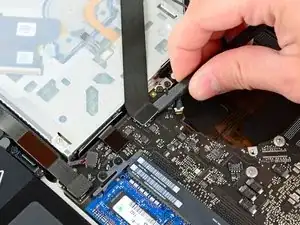
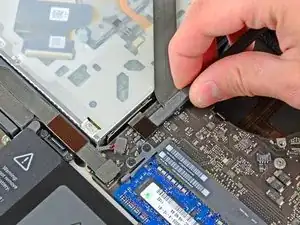
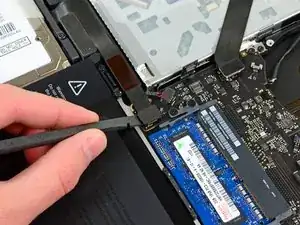
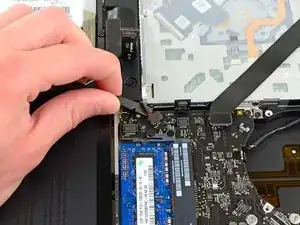
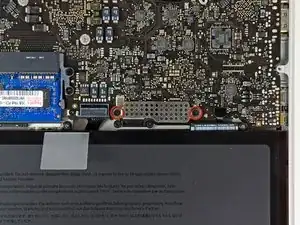
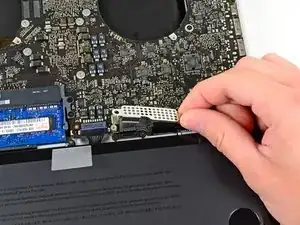
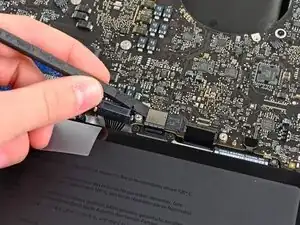
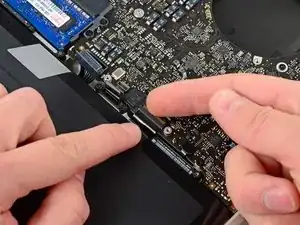
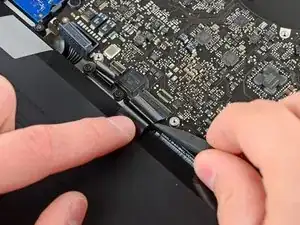
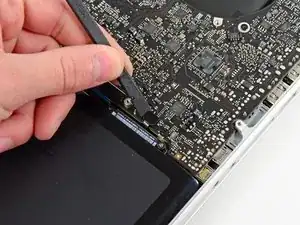

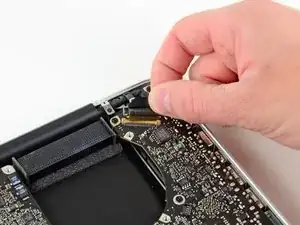
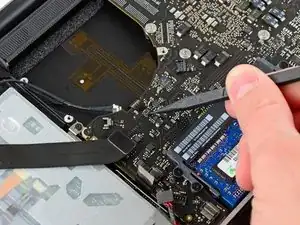
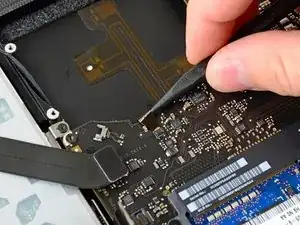
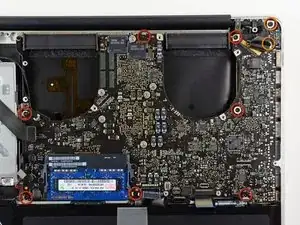
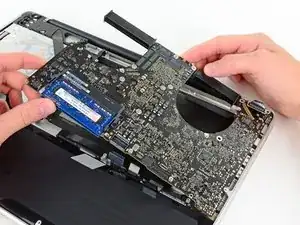
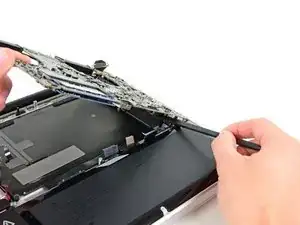
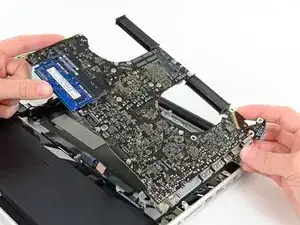

Of course, this is not the right fan but the left in the picture.
maccentric -
Managed to break off a fan connector. Really poor mistake there, as it really is not too hard. Follow exactly like the picture and realize that it lifts up! But good news, I managed to break one of the least important parts and the computer still runs fine!
Sam -